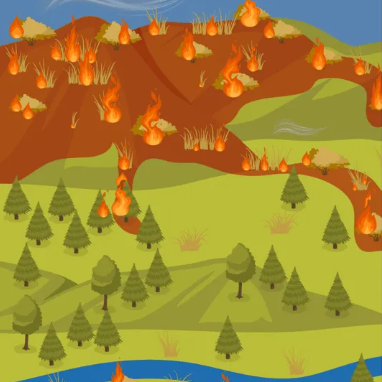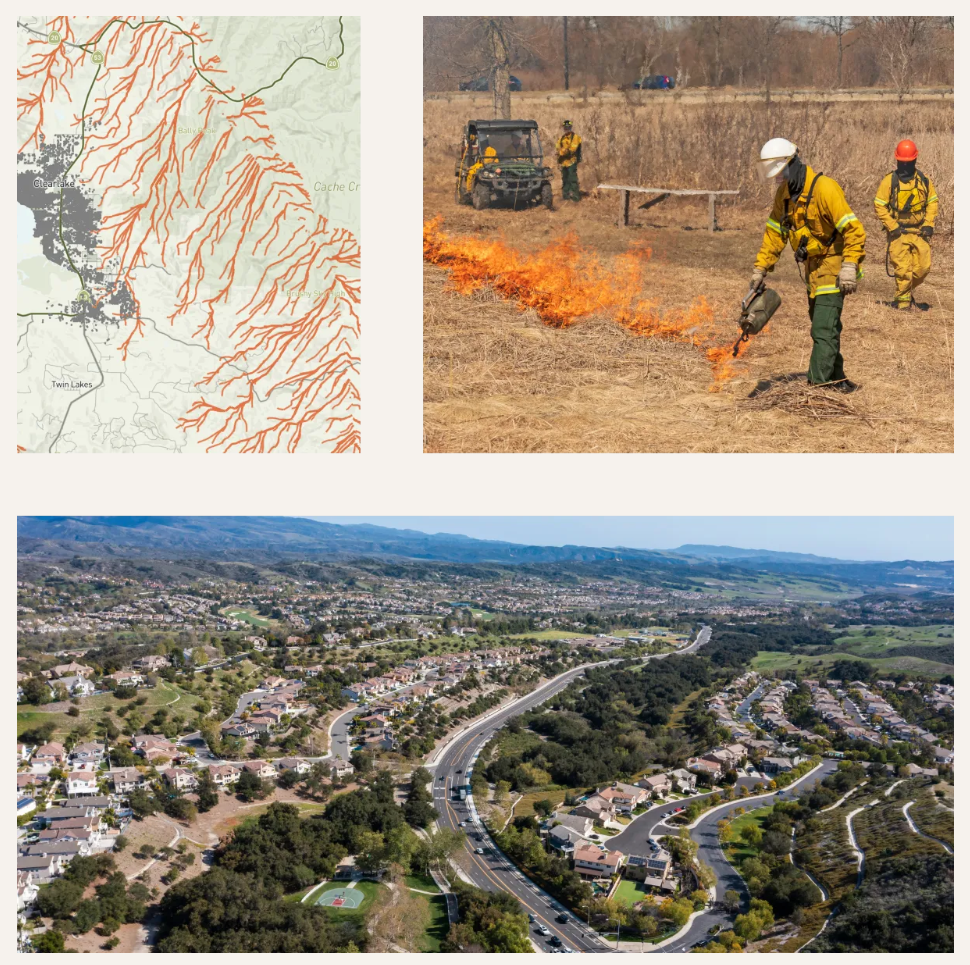
Vegetation-to-Vegetation
Vegetation-to-vegetation Fire Pathways™ are the fastest routes that wildfire takes through vegetative fuels during a wind-driven event. These Fire Pathways can be disrupted by vegetation treatments, which slow the fire, increasing arrival time of fire to values-at-risk.























